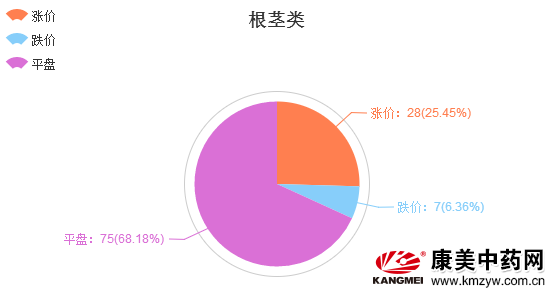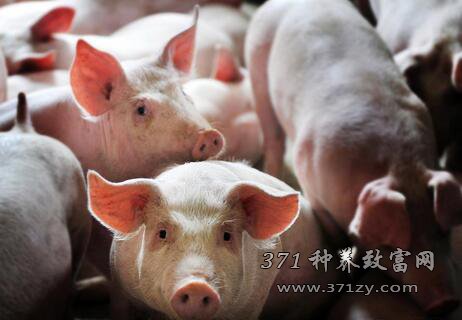Analysis report on the first quarter of 2016 traditional Chinese Medicine Market
In the first quarter of 2016, the Spring Festival was the turning point. In January before the Spring Festival, the overall market was weak, varieties fell more and rose less, and businesses were confused to wait and see, but in March after the festival, the market opened a strong wave of price increases, coming out of a wave of "Xiaoyangchun" market. Business concern, investment confidence and other "boom indicators" have also reached the highest value of the bear market in the past five years. Is this signal a rebound after the bottom is established? Or repeat the V-shaped reversal of the market trough in 2009, or just a flash in the pan after too long weakness!
I. Market monitoring and induction
Rhizomes:
Price-increasing varieties: Panax notoginseng, Radix Pseudostellariae, Yuanhu, Ophiopogon, chuanbei, Pingbei, Zhejiang Fritillaria, yam, Codonopsis pilosula, Angelica sinensis, Radix Astragali, Platycodon grandiflorum, Radix Astragali, Radix Astragali, Radix Euphorbiae, Radix Atractylodis, Radix Atractylodes, Radix Atractylodis, Radix Atractylodes, Allium macrostemon, Morinda officinalis. A total of 28, a total of 110 commonly used varieties, the price increase accounted for 25.5%.
Among them, there are 14 commonly used bulk varieties, accounting for 50%. 2 varieties with an increase of 50%, 1 variety with an increase of 30%, 5 varieties with an increase of 20%, and 20 varieties with an increase of 5-10%.
Falling varieties: ginseng, American ginseng, Radix Ginseng, Ligusticum chuanxiong, Achyranthes bidentata, Radix Isatidis, Cat's claw grass. A total of 7, the total number of monitoring 110. The drop in price accounted for 6%.
Among them, there are 6 commonly used bulk varieties, accounting for 86%.
Flat plate or small concussion varieties accounted for 68%.

Summary:
1. Rhizome varieties generally have large sales volume, obvious price periodicity and high market attention. if divided by plate in the whole traditional Chinese medicine market, the proportion of rhizome can reach 50%. Seeds and kernels accounted for 30%. Mosaic and skin accounted for 15%, animals accounted for 5%. Therefore, the fluctuation frequency and range of the root market can be used as one of the bases for judging the current market activity and the heat of merchants' participation.
2. Price increases account for 30%, falling prices account for 10%, and flat prices account for 60%, indicating that the current downward pressure on the market has been small and has nurtured upward potential. The first step is to judge that there are signs of bottoming at the bottom of the market in the first quarter of 2016. then we have to go through the second, third and fourth quarters to verify and correct errors to prevent the market from "fake rebound".
3. The rise and fall of commonly used bulk varieties is of guiding significance to the judgment of market activity. The price increase of bulk varieties is conducive to the intervention of capital, the demonstration effect of making money is more obvious, and the popularity is more enhanced, so as to promote the overall market activity, enhance the enthusiasm of businessmen to participate, and vice versa. Therefore, among the price-rising varieties, bulk varieties account for 50%, indicating that the popularity and activity of the market have greatly improved.
4. Among the falling varieties, bulk varieties account for 80%, indicating that the current market is still polarized, merchants are still in a hesitant stage, the market has not reached a unified consensus, and the overall trend of the current market is not clear. Whether the high-priced varieties move closer to the low prices, or the low-priced varieties are driven up by the high-priced varieties, still need to be verified.
Seed kernel:
Price-increasing varieties: Liao Wuwei, raspberry, grass fruit, gardenia, cardamom, Tribulus terrestris, leek seed, Cnidium seed, almond, plum kernel, hemp kernel, Evodia, Fructus Aurantii, bergamot, Coix, Fructus Aurantii, plantain seed, a total of 17. There were 90 monitoring and statistics, accounting for 19%.
Low-priced varieties: Chinese wolfberry, dodder, Brucea javanica, jujube seed, cypress seed, forsythia, lotus seed. A total of 7, monitoring statistics 90, accounting for 8%.
Flat or slightly concussive varieties accounted for 73%.
Summary:
The main results are as follows: 1. Seed and kernel varieties are generally monopolistic, and their periodicity, volatility and price sensitivity are not as good as those of rhizomes, so they play an auxiliary and foil role in most of the time, and play a secondary verification role, such as the rise of rhizomes and kernels, which shows that the market as a whole is on the rise.
2. The varieties with higher prices are more than those with lower prices, and the varieties with flat plates account for the majority. It is in line with the trend of rhizomes.
Grasses, flowers and leaves
Price-increasing varieties: Cistanche deserticola, Suoyang, Artemisia argyi, Herba Epimedii, Scutellaria barbata, chrysanthemum, wild chrysanthemum, Xinyi flower, summer withered ball, Daqing leaf, Panax notoginseng flower. A total of 13 varieties were monitored, accounting for 13% of the total price increase.
Falling varieties: patchouli, Asarum, safflower. A total of 3, 100 varieties were monitored, accounting for 3% of the falling price.
Flat plate varieties accounted for 84%.
Summary:
1. The varieties of flowers and plants are more monopolistic, light in quality and occupy inventory, so it is difficult for peripheral funds to intervene. However, under the support of rising wages and freight costs, the bottom of the market is also steadily improving. Historically, the market of flower and leaf varieties has risen steadily. There is no resplendence of high price, and the market pays little attention.
2. More price increases and less price falls, which is in line with the overall market trend.
3. Flower and plant varieties generally have short production cycle, low production investment, easy production recovery and easy adjustment, and their production characteristics determine the overall stability of their prices.
Dermatophytes and algae
Price increase varieties: White fresh bark, ground bone bark. There are 2 varieties with increased prices, with a total of 50 varieties monitored, accounting for 4%.
Falling price varieties: Poria cocos, Polyporus umbellatus. There were 2 varieties with falling prices, and 50 varieties were monitored, accounting for 4%.
Flat plate or small concussion varieties accounted for 92%.
Related
- A course of planting techniques and methods on how to grow carrots
- How to plant the latest tulips?
- Is it better to pick tea in the morning or in the afternoon? When is the best time for tea to be picked? what is the third or fifth tea?
- Launch Yuanxiao Happy combination Haocha + Tea Yuan healthy Taste
- Penghu Tourism "Fireworks 20 Parade with You"
- 2022 West Lake Happiness holds "Digital Revitalization Voucher" and draws iphone13 and laptop.
- Banqiao Fuzhou social houses are designed to change start-up combined with police elimination to create a safe and livable environment
- The convenient measure of "mechanical weeding" in Xinbei has been abused and the Agriculture Bureau has imposed heavy penalties on the illegal land consolidation.
- Changgeng University Joins Hands with Four Memory Factories to Rescue Memory Talent Shortage
- The list of Taiwan's top 100 MVP managers is listed by the Director-General of the Farmers' Association of Sanxia District.



